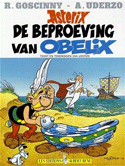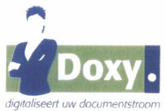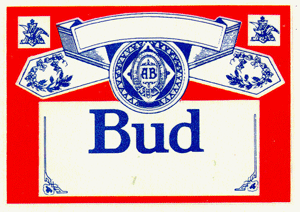166. (....) kunnen in het kader van artikel 8, lid 4, van verordening nr. 40/94 de rechten die uit sommige tekens voortvloeien, niet teloorgaan, ondanks het feit dat deze tekens niet „normaal” zijn gebruikt. In dit verband zij erop gewezen dat een krachtens de Overeenkomst van Lissabon geregistreerde benaming van oorsprong niet kan worden geacht een soortnaam te zijn geworden, zolang zij als benaming van oorsprong wordt beschermd in het land van oorsprong. Bovendien blijft de door een benaming van oorsprong verleende bescherming verzekerd, zonder dat tot hernieuwing ervan hoeft te worden overgegaan (artikel 6 en artikel 7, lid 1, van de Overeenkomst van Lissabon). Dit betekent niet dat het mogelijk is een uit hoofde van artikel 8, lid 4, van verordening nr. 40/94 ingeroepen teken niet te gebruiken. De opposant mag zich evenwel beperken tot het bewijs dat het betrokken teken is gebruikt in het kader van een handelsactiviteit waarmee een economisch voordeel werd nagestreefd, zonder daarom in de zin en volgens de voorwaarden van artikel 43, leden 2 en 3, van verordening nr. 40/94 en van regel 22 van verordening nr. 2868/95 te hoeven bewijzen dat dit teken normaal is gebruikt. Elke andere uitlegging zou erop neerkomen dat op de tekens bedoeld in artikel 8, lid 4, de voorwaarden worden toegepast die specifiek voor merken en de omvang van hun bescherming gelden. Hieraan moet worden toegevoegd dat de opposant in het kader van artikel 8, lid 4, van verordening nr. 40/94, anders dan bij artikel 8, lid 1, sub b, van verordening nr. 40/94, ook moet aantonen dat het teken in kwestie hem volgens het recht van de betrokken lidstaat het recht verleent om het gebruik van een later merk te verbieden.
(…) 168. Gelet op deze elementen heeft de kamer van beroep blijk geven van een onjuiste rechtsopvatting door de gemeenschapsrechtelijke bepalingen betreffende het „normale” gebruik van het oudere merk naar analogie toe te passen, inzonderheid teneinde – afzonderlijk voor Oostenrijk, Frankrijk, Italië en Portugal – uit te maken of de betrokken tekens in het economisch verkeer waren gebruikt. De kamer van beroep had moeten verifiëren of de door Budvar tijdens de administratieve procedure overgelegde elementen erop wezen dat de betrokken tekens waren gebruikt in het kader van een handelsactiviteit waarmee een economisch voordeel werd nagestreefd, en niet in de particuliere sfeer, ongeacht het grondgebied waar zij werden gebruikt. Toch kan deze methodologische fout van de kamer van beroep enkel tot de vernietiging van de bestreden beslissingen leiden indien Budvar het bewijs had geleverd dat de betrokken tekens in het economisch verkeer werden gebruikt.
169. Dienaangaande moet worden benadrukt dat de oppositie volgens artikel 8, lid 4, van verordening nr. 40/94 is gebaseerd op een in het economisch verkeer „gebruikt” teken. Anders dan Anheuser-Busch stelt, volgt uit deze bepaling niet dat de opposant moet aantonen dat het betrokken teken is gebruikt vóór de gemeenschapsmerkaanvraag. Zoals voor oudere merken kan hoogstens worden geëist dat, om te vermijden dat het oudere recht enkel wegens een oppositieprocedure wordt gebruikt, het teken in kwestie vóór de publicatie van de merkaanvraag in het Blad van gemeenschapsmerken is gebruikt.
(…) 175. Voorts kan een aanduiding die de geografische herkomst van een product aangeeft, zoals een merk in het economisch verkeer worden gebruikt (zie in die zin arrest Hof van 7 januari 2004, Gerolsteiner Brunnen, C-100/02). Dit betekent daarom niet, zoals de kamer van beroep in de bestreden beslissingen beweert, dat de betrokken benaming „als een merk” zou zijn gebruikt, en derhalve haar primordiale functie verliest. Deze conclusie staat los van het door de kamer van beroep aangevoerde feit dat Budvar eveneens houdster is van een merk BUD, dat overigens geen deel uitmaakt van het juridische of feitelijke kader van het onderhavige geschil. Voor de toepassing van artikel 8, lid 4, van verordening nr. 40/94 volstaat de vaststelling dat het ter onderbouwing van de oppositie ingeroepen teken in het economisch verkeer wordt gebruikt. Het feit dat dit teken gelijk is aan een merk, betekent nog niet dat het niet wordt gebruikt in het economisch verkeer. Bovendien moet worden vastgesteld dat het BHIM en Anheuser-Busch niet duidelijk preciseren hoe het teken BUD „als een merk” zou zijn gebruikt. Inzonderheid blijkt uit niets dat de op de betrokken producten aangebrachte vermelding „bud” meer naar de commerciële oorsprong van het product zou verwijzen dan naar de geografische oorsprong ervan, zoals Budvar stelt. Bovendien moet worden opgemerkt dat de etiketten van de betrokken producten, zoals deze uit het dossier van het BHIM blijken en zoals ter terechtzitting is bevestigd, onder de vermelding „bud” ook de naam van de producerende onderneming aangeven, in casu Budjovický Budvar.
(…) 177. Gelet op het voorgaande en rekening houdend met de door Budvar aan het BHIM overgelegde documenten moet worden geoordeeld dat, anders dan de kamer van beroep heeft geconcludeerd, Budvar het bewijs heeft geleverd dat de betrokken tekens in de zin van artikel 8, lid 4, van verordening nr. 40/94 in het economisch verkeer zijn gebruikt.
Rechten o.g.v. oorsprongsbenaming: (…) 188. In casu heeft de kamer van beroep geoordeeld dat de oppositie ook moest worden afgewezen op grond dat Budvar niet had aangetoond dat de betrokken tekens haar het recht verleenden om het gebruik van de term „bud” – als merk – in Oostenrijk of in Frankrijk te verbieden.
(…) 192. In de eerste plaats moet worden vastgesteld dat de kamer van beroep enkel naar de in Oostenrijk en in Frankrijk gewezen rechterlijke beslissingen heeft verwezen voor haar conclusie dat Budvar niet had bewezen dat de betrokken tekens haar het recht verleenden om het gebruik van een later merk te verbieden. Ook al zijn de in de betrokken landen gewezen rechterlijke beslissingen, zoals hierboven in herinnering is geroepen, van groot belang, moet toch rekening ermee worden gehouden dat in casu geen enkele in Oostenrijk of in Frankrijk gewezen rechterlijke beslissing gezag van gewijsde heeft verkregen. In die omstandigheden mocht de kamer van beroep zich voor haar conclusie niet uitsluitend op deze beslissingen baseren. De kamer van beroep had eveneens rekening moeten houden met de door Budvar ingeroepen bepalingen van nationaal recht, de Overeenkomst van Lissabon en het bilaterale verdrag daaronder begrepen. In dit verband zij opgemerkt dat Budvar zich met betrekking tot Frankrijk bij het BHIM op verschillende bepalingen van de code rural, van de code de la consommation en van de code de la propriété intellectuelle heeft beroepen. Met betrekking tot Oostenrijk beschikte het BHIM over de tot dan in deze lidstaat gewezen rechterlijke beslissingen en daardoor dus ook, anders dan Anheuser-Busch stelt, over de rechtsgrondslag voor de door Budvar krachtens het ingeroepen nationale recht ingestelde beroepen. Voorts heeft Budvar in de loop van de procedure bij het BHIM verklaard dat zij op grond van artikel 9 van het bilaterale verdrag het recht had, rechtstreeks beroep bij de Oostenrijkse rechterlijke instanties in te stellen. Bovendien heeft Budvar in het kader van haar oppositie de bepalingen van de Oostenrijkse regelgeving inzake merken en oneerlijke mededinging uiteengezet.
(…) 199. Om alle voorgaande redenen moet worden geoordeeld dat de kamer van beroep blijk heeft gegeven van een onjuiste rechtsopvatting door geen rekening te houden met alle relevante elementen, feitelijk en rechtens, teneinde uit te maken of het recht van de betrokken lidstaat in de zin van artikel 8, lid 4, van verordening nr. 40/94 Budvar het recht verleent om het gebruik van een later merk te verbieden.
(…) 201. Gelet op alle voorgaande overwegingen moet het tweede onderdeel van het enige middel, en dus het enige middel en het beroep in hun geheel, worden toegewezen.
202. Bijgevolg moeten de bestreden beslissingen worden vernietigd.”
 Vzr. Rechtbank Rotterdam, 18 december 2008, LJN: BG7771, Dari financial services B.V. tegen Match@work b.v. c.s.
Vzr. Rechtbank Rotterdam, 18 december 2008, LJN: BG7771, Dari financial services B.V. tegen Match@work b.v. c.s. Rechtbank Amsterdam, 18 december, KG ZA 08-2214 WT/MW, Vandenberg Drukwerken B.V. tegen NL Unlimited B.V. (met dank aan Marc de Boer,
Rechtbank Amsterdam, 18 december, KG ZA 08-2214 WT/MW, Vandenberg Drukwerken B.V. tegen NL Unlimited B.V. (met dank aan Marc de Boer,  HvJ EG, 18 December 2008, zaak C-16/06 P, Les Éditions Albert René Sàrl tegen Orange A/S
HvJ EG, 18 December 2008, zaak C-16/06 P, Les Éditions Albert René Sàrl tegen Orange A/S Rechtbank Groningen 17 december 2007, KG ZA 08-385. R.D.M. Management Beheer B.V. tegen Bloem Beheer B.V. c.s. (met dank aan Rogier de Vrey en Alexander Alff,
Rechtbank Groningen 17 december 2007, KG ZA 08-385. R.D.M. Management Beheer B.V. tegen Bloem Beheer B.V. c.s. (met dank aan Rogier de Vrey en Alexander Alff,  Vzr. Rechtbank ’s-Gravenhage, 16 december 2008, KG ZA 08-1422, Doxis B.V. tegen Nederpelt Software B.V. c.s.
Vzr. Rechtbank ’s-Gravenhage, 16 december 2008, KG ZA 08-1422, Doxis B.V. tegen Nederpelt Software B.V. c.s. GvEA, 16 december 2008, gevoegde zaken T-225/06, T-255/06, T-257/06 en T309/06, Budjovický Budvar tegen OHIM / Anheuser-Busch.
GvEA, 16 december 2008, gevoegde zaken T-225/06, T-255/06, T-257/06 en T309/06, Budjovický Budvar tegen OHIM / Anheuser-Busch.




















































































